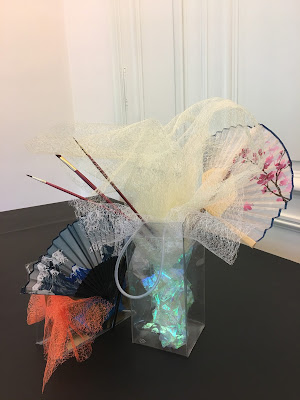 |
| Pine, roses, chrysanthemums, berries, bare branches and gerbera |
To see more of Sogetsu Ikebana floral arrangements for Christmas and New Year, check these posts:
Christmas Time: Sogetsu Ikebana Arrangements for the Festive Season
Festive Colors for the Holiday Season Ikebana
Year End Celebrations in Sogetsu Ikebana
Joyeux Noël & Bonne Année: Sogetsu Ikebana for Christmas Celebrations
Celebrating 2016 with Sogetsu Festive Ikebana
Happy New Year to All with Ikebana
Cenevre'de Noel Zamanı - Christmas Time in Calvin's City
Yeni Yılınız Kutlu Olsun! Sogetsu Festive Ikebana for a Happy New Year



































